The ukulele, with its sweet and melodious sound, is a fantastic instrument for beginners to learn. Its compact size, simple chord structures, and relatively easy learning curve make it an ideal choice for those who are new to the world of music. In this ukulele tutorial for complete beginners, we’ll take you through the basics, from choosing the right ukulele to playing your first chords. So, let’s dive in and start your musical journey!
Choosing the Right Ukulele
Before you can start strumming away, you’ll need to select the right ukulele for you. Ukuleles come in different sizes and materials, with the four most common types being soprano, concert, tenor, and baritone. For beginners, a soprano or concert ukulele is usually recommended due to their smaller size and ease of handling.
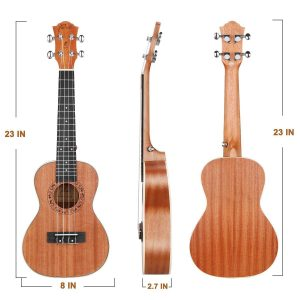

Here are a few factors to consider when choosing your first ukulele:
- Budget: Determine how much you’re willing to invest in your ukulele. There are great options available in a wide price range.
- Size: Consider the size of the ukulele in relation to your comfort and hand size. Smaller ukuleles are usually easier for beginners to handle.
- Material: Ukuleles can be made from various woods, each with its own unique tone. Common woods include mahogany, koa, and spruce.
- Brand: Reputable ukulele brands like Kala, Fender, and Cordoba often produce quality instruments suitable for beginners.
Basic Ukulele Parts
Before we dive into playing, let’s get acquainted with the basic parts of the ukulele:
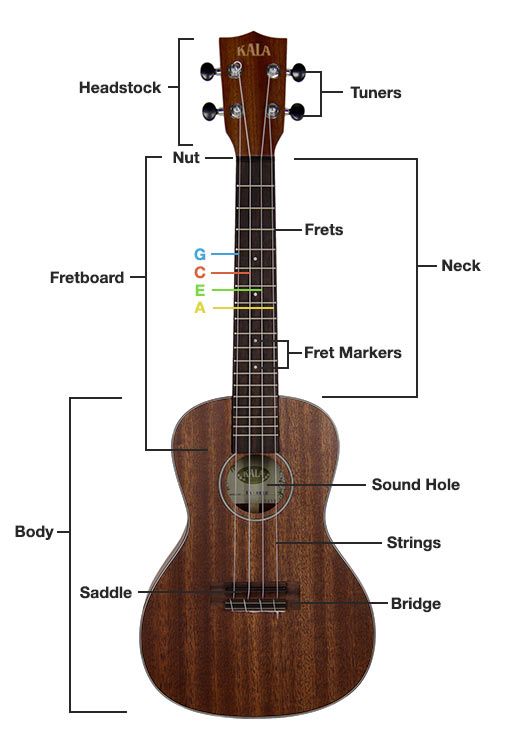

- Headstock: The top of the ukulele where the tuning pegs are located.
- Tuning Pegs: These are used to adjust the tension of the strings, allowing you to tune the ukulele.
- Fretboard: The long, flat surface where you press down on the strings to make different notes and chords.
- Frets: The metal strips on the fretboard that divide it into sections. These help you produce different pitches.
- Soundhole: The hole in the body of the ukulele that allows the sound to escape.
- Bridge: The part of the ukulele that anchors the strings to the body.
- Strings: Usually made of nylon or a combination of nylon and other materials.
Basic Chords
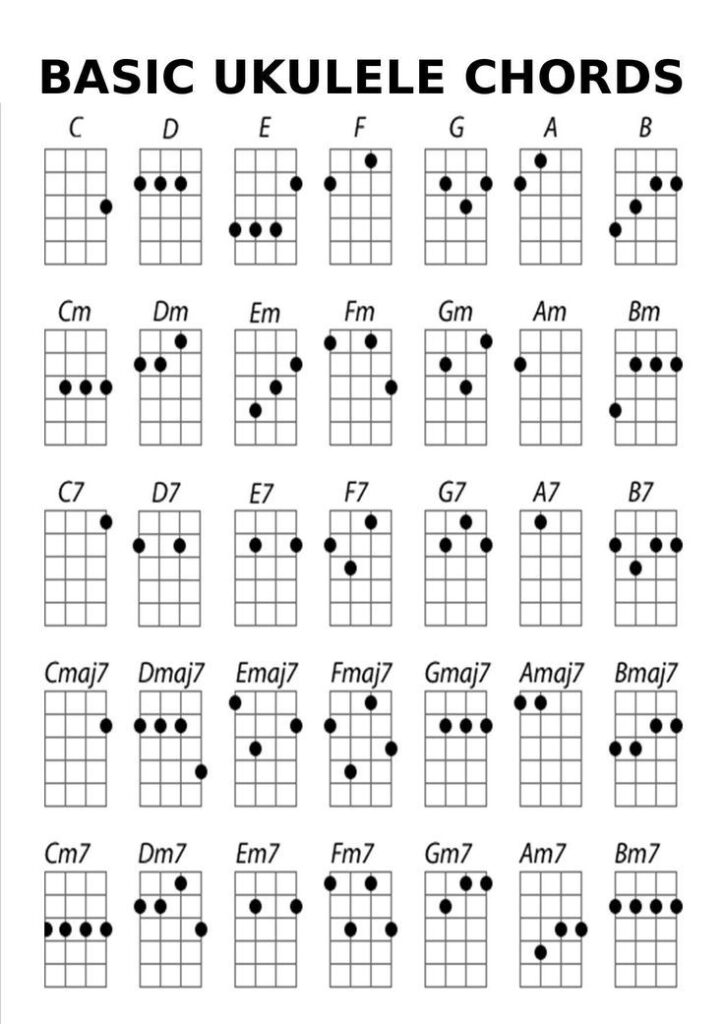

Now, let’s start playing some basic chords. These are the building blocks of many songs, and mastering them is crucial for any ukulele player. We’ll start with three essential chords: C, G, and F.
- C Chord:
- Place your ring finger on the 3rd fret of the A string (the bottom string).
- Keep the other strings open (unpressed).
- G Chord:
- Put your index finger on the 2nd fret of the A string.
- Place your middle finger on the 2nd fret of the C string.
- Place your ring finger on the 3rd fret of the E string.
- F Chord:
- Press down all the strings on the 1st fret with your index finger.
- Put your middle finger on the 2nd fret of the G string.
Strumming
Now that you know these basic chords, let’s talk about strumming. You can use your thumb or index finger to strum the strings up and down. Start with a simple down-up-down-up pattern, and as you get comfortable, experiment with different strumming patterns to add rhythm to your playing.
Practice, Practice, Practice
As with any skill, practice is key to becoming proficient. Start with simple songs that use the chords you’ve learned and gradually work your way up to more complex tunes. Don’t be discouraged by initial challenges; progress will come with time and dedication.
How to Hold the Ukulele
The ukulele is typically held in the lap, with the body of the instrument resting on the left thigh. The neck of the instrument should be angled slightly upwards, so that you can easily see the fretboard.
The left hand is used to fret the strings, and the right hand is used to strum the strings. The left hand should be placed so that the fingers are curled slightly and the tips of the fingers are resting on the fretboard.
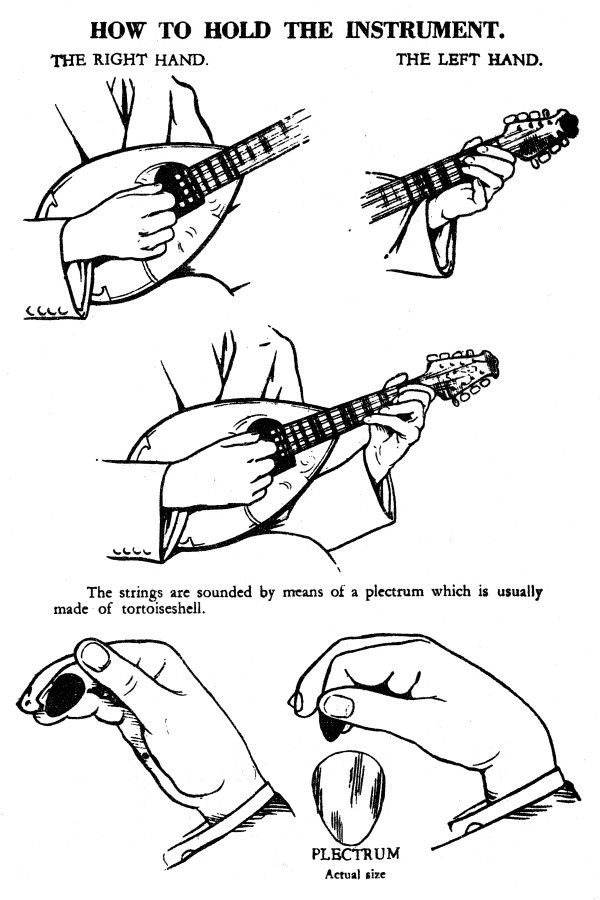

How to Strum the Ukulele
There are many different strumming patterns that can be used on the ukulele. A simple strumming pattern that is good for beginners is to strum down, up, down, up. You can also try strumming down, down, up, up.
The strum should be smooth and even. You should not strum too hard, as this can make the strings sound out of tune.
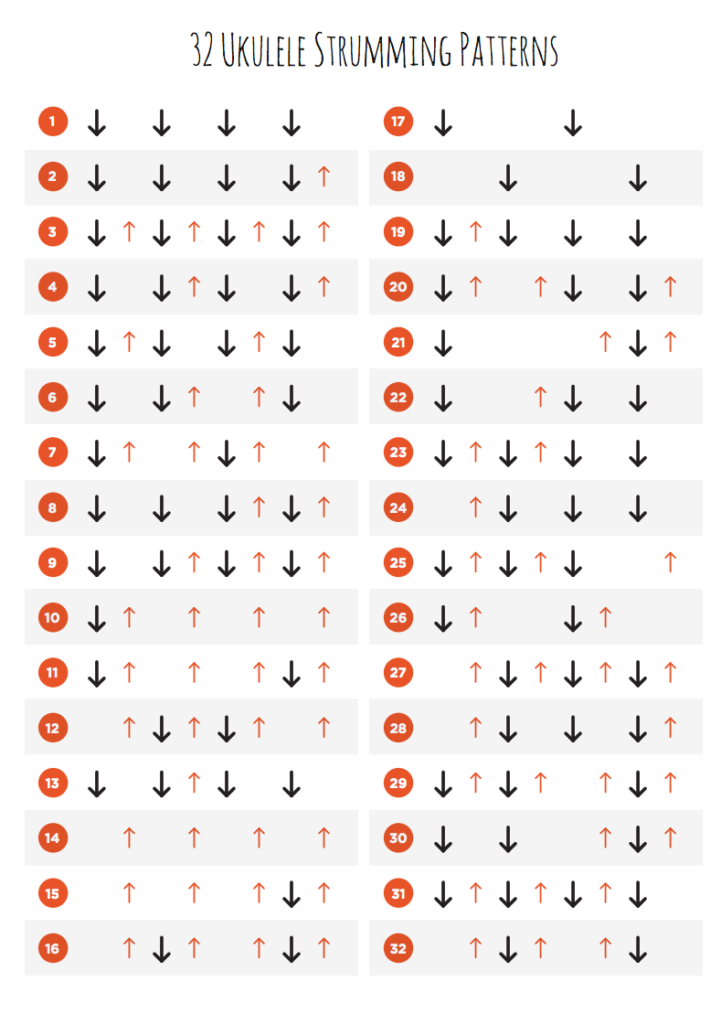

What is the best ukulele for beginners?
The best ukulele for beginners is the Kala KA-15S Mahogany Soprano Ukulele.
Where should I start with the ukulele?
ou should start with the basics, such as how to hold the ukulele, how to strum, and how to play chords. In this Blog
How long does it take to learn to play a ukulele?
it takes about 3-6 months of consistent practice to learn the basics of the ukulele, such as how to hold the instrument, strum the strings, and play basic chords. However, some people may be able to learn the basics in less time, while others may need more time.


as usual a guitar teacher teaching uke. with erroneous chord charts (eg E7) and an image of how to hold a mandolin not a uke!